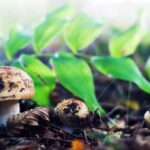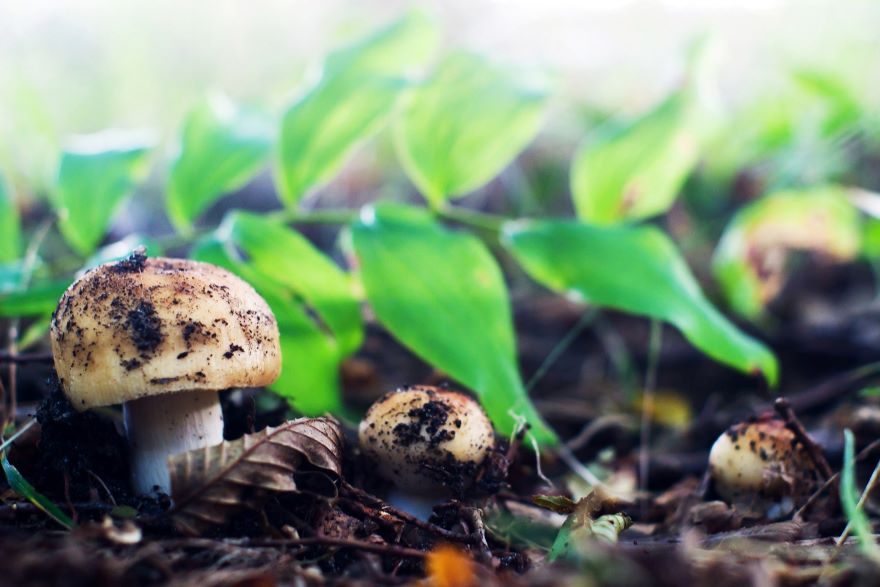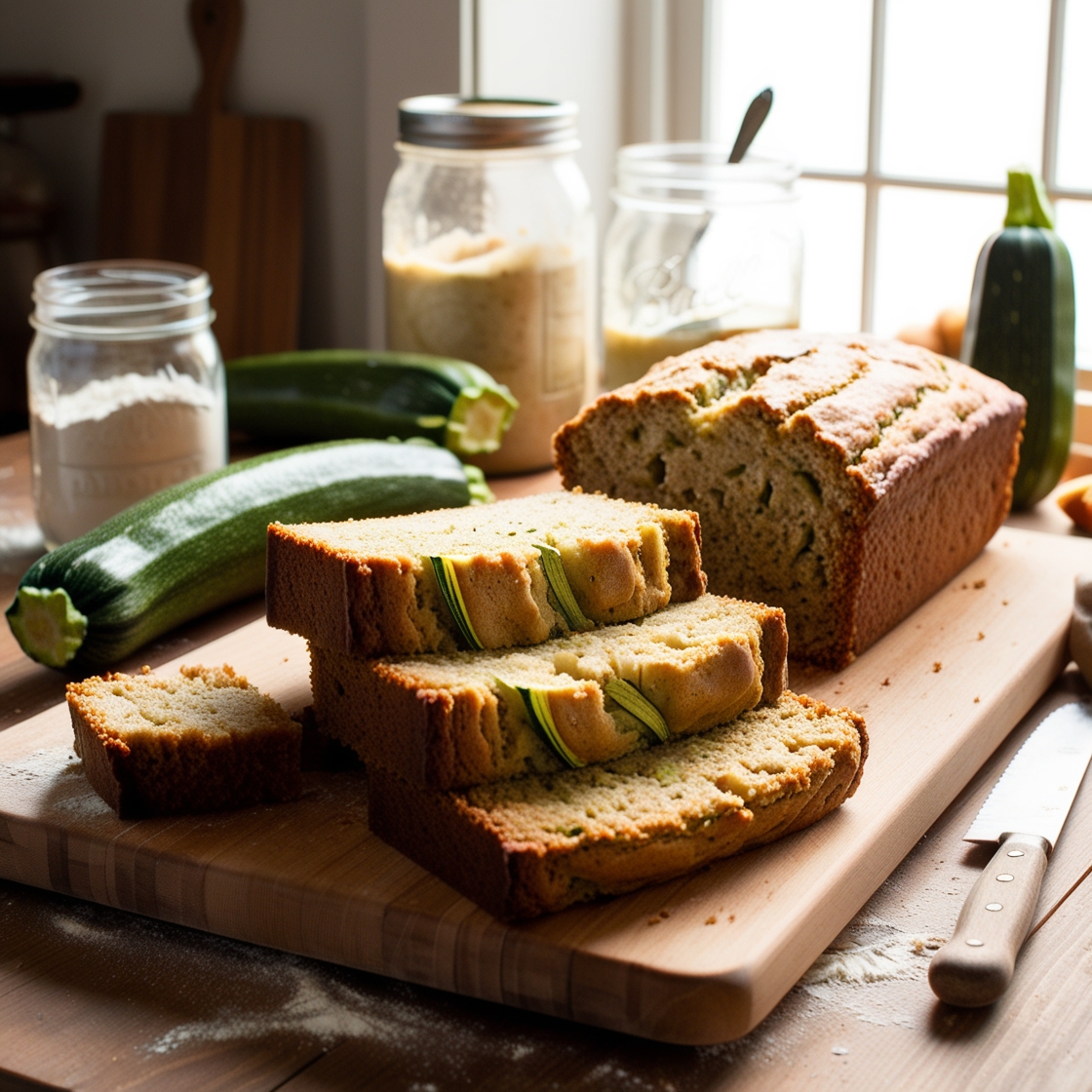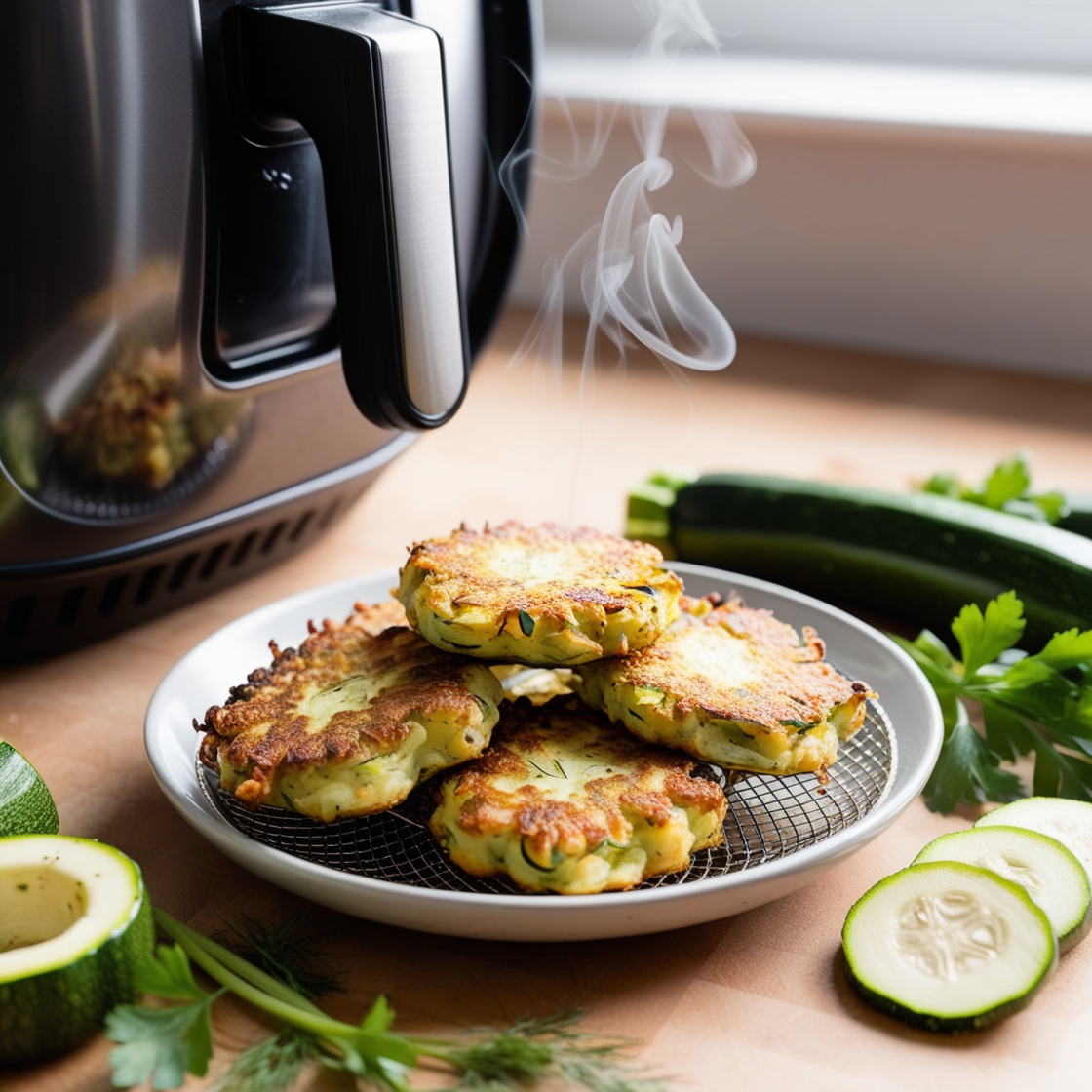Growing mushrooms at home can be a rewarding and educational experience, as well as an opportunity to enjoy fresh, organic mushrooms in your own kitchen. With numerous species suitable for cultivation, it’s essential to select the right variety for your needs and skill level. In this article, we will discuss the easiest mushrooms to grow for beginners, giving you a solid starting point for your mushroom cultivation journey.

Mushroom cultivation may seem intimidating at first; however, once you understand the growth process and know how to set up your growing area, the task becomes much more manageable. Some of the easiest mushroom varieties to grow at home include shiitake and oyster mushrooms, both of which offer high yields and straightforward cultivation methods. Furthermore, mushroom grow kits are an excellent option for beginners, providing all the necessary materials and instructions for a successful mushroom harvest.
As you become more familiar with the process of growing mushrooms at home, caring for your mushroom cultivation will become second nature, and you’ll soon be on your way to harvesting your very own mushrooms. Now, let’s delve into some key takeaways that can help guide you on your mushroom growing journey.
Key Takeaways
- Choose easy-to-grow varieties like shiitake and oyster mushrooms for a beginner-friendly experience.
- Understand the growth process and set up a proper growing area to ensure a successful harvest.
- Invest in a mushroom grow kit for a convenient and straightforward introduction to home mushroom cultivation.
Selecting Your Mushroom Variety

Criteria for Easiness
When I started growing mushrooms at home, I looked for varieties that are beginner-friendly. I considered important factors such as low contamination risk, adaptability to various substrates, and fruiting conditions.
I’ve found that faster-growing species such as oyster mushrooms generally have a lower risk of contamination as they colonize the substrate more quickly than slower-growing ones like shiitake mushrooms. Additionally, varieties that can grow on a wide range of substrates like wine cap mushrooms and lion’s mane mushrooms increase the likelihood of successful yields for beginners.
Top Varieties for Beginners
Based on my experience and research, here are my top picks for easy-to-grow mushrooms:
- Oyster Mushrooms: Oyster mushrooms are considered one of the easiest mushrooms to grow for beginners. They are highly adaptable, and can grow on coffee grounds, straw, or sawdust. Most importantly, they have a quick growing and fruiting cycle, allowing you to harvest multiple crops in a short time frame.
- Shiitake Mushrooms: If you have a bit more patience, shiitake mushrooms are a great choice. Since they grow primarily on hardwood logs or supplemented sawdust, this classic variety tends to yield a higher harvest compared to other growing methods.
- Button Mushrooms: Button mushrooms are an excellent option for those who are just starting to grow mushrooms at home. These mushrooms can be grown indoors or outdoors, and with the right conditions, they can fruit multiple times over the course of a few months.
- Wine Cap Mushrooms: Also known as King Stropharia, wine cap mushrooms easily grow on a variety of substrates, including straw, wood chips, and mulch. These mushrooms are popular among gardeners as they make a great addition to vegetable gardens or permaculture systems.
- Lion’s Mane Mushrooms: Not only are lion’s mane mushrooms absolutely delicious, but they’re also relatively easy for beginners to cultivate. Given the proper fruiting temperature, lion’s mane mushrooms thrive on various substrates including hardwood logs, sawdust, or straw.
I hope my insights can help you select the best mushroom variety for your home growing endeavors. Good luck, and happy mushroom cultivating!
Understanding the Growth Process
Life Cycle of Mushrooms
As a mushroom cultivator, I’ve learned that understanding the life cycle of mushrooms is crucial for successful growth. The mushroom’s life cycle begins when the spawn (a mix of mushroom spores and a growth medium) is introduced to a suitable substrate. The first stage, the growth of mycelium (a network of tiny white filaments), occurs. This stage can take anywhere from one to four weeks, depending on the mushroom species and environmental conditions.
After the substrate is fully colonized by mycelium, it’s time for the fruiting stage. This is when the actual mushrooms, called a flush, begin to form. During this stage, mushrooms grow rapidly and can be harvested once they’ve reached an adequate size. The timing for harvesting varies between species, but it typically occurs within a few days to a week after the flush appears.
Role of Mycelium
The mycelium plays a crucial role in the mushroom growth process. It serves as the “roots” of the mushroom, providing the necessary structure and nutrients for the fruiting bodies to develop. The mycelial network allows the fungi to obtain water and nutrients from its environment and break down complex organic compounds into simpler forms that the mushroom can use as a food source. By nurturing a healthy mycelium, I can directly influence the success of my mushroom cultivation project.
Substrate Importance
The choice of substrate is important for the growth of mycelium and mushroom fruits. Different mushroom species thrive on different substrates. Some easily grown mushrooms include:
- Oyster mushrooms: Straw, coffee grounds, cardboard
- Shiitake mushrooms: Hardwood logs, sawdust
- Wine cap mushrooms: Wood chips, straw
- Pioppino mushrooms: Hardwood sawdust, straw
- Lion’s mane mushrooms: Hardwood sawdust, straw
As I mentioned earlier, the substrate plays a significant role in providing an environment for the mycelium to form and break down nutrients for the growing mushrooms. By choosing the right substrate, I can ensure a smoother growth process and a higher fruit yield during the harvest stage.
Setting Up Your Growing Area

Growing mushrooms can be a rewarding hobby, and with a little preparation, you can set up a suitable growing area. There are two primary methods for cultivating mushrooms: indoor cultivation and outdoor cultivation. I’ll cover both methods and provide some helpful tips and techniques.
Indoor Cultivation
Indoor cultivation allows for greater control over environmental factors such as temperature, humidity, and lighting. To start, you’ll want to decide on the type of substrate to use. Common substrates include:
- Logs: Hardwood logs like oak or beech are suitable for growing mushroom species like shiitake.
- Sawdust: This is used for growing oyster mushrooms, as they prefer densely packed substrate.
- Straw: It can be used to grow species like oyster and enoki mushrooms.
To create a suitable environment, you’ll need to maintain consistent temperature and humidity levels. A small fan for air circulation and a humidifier can be helpful in achieving these conditions.
Remember to keep the growing area clean and free of contaminants, as they can negatively impact the growth of your mushrooms.
Outdoor Cultivation
Outdoor cultivation typically involves using substrates like wood chips or straw, which can be easily spread on the ground or placed in containers. In this setup, you can grow mushrooms like wine cap and oyster. Here’s a quick guide on how to use different substrates outdoors:
- Logs: Inoculate logs with mushroom spawn, then stack or bury them partially in the ground. Keep the logs moist by watering regularly or placing them in a shaded, humid area.
- Wood chips: Spread a layer of wood chips on the ground or in a container, inoculate with mushroom spawn, and cover with a thin layer of additional chips. Water regularly and ensure adequate shade.
- Straw: Create a raised bed using straw, inoculate with mushroom spawn, and cover with a layer of straw or other mulch material. Keep the bed moist and shaded.
Growing mushrooms outdoors also requires monitoring temperature, humidity, and light conditions to ensure optimal growth. However, outdoor cultivation allows for the use of larger growing spaces and higher yields.
By setting up the right growing area based on the method you choose, you’re well on your way to cultivating a successful mushroom crop.
Caring for Your Mushroom Cultivation

Watering and Humidity Control
When I first started growing mushrooms at home, I quickly realized the importance of maintaining the right level of humidity and watering. Most mushrooms require a high level of humidity, generally between 85% and 95%. I found it useful to monitor the humidity levels in my growing area using a hygrometer.
To maintain proper humidity, I mist the growing medium with water and cover the cultivation area with a plastic sheet or tent. For substrates like sawdust/wood chips mixture, I add a small amount of water to the mixture before sealing it in a mushroom bag or mason jar. Remember to mist regularly but avoid overwatering, as excess water can lead to mold and other issues.
Monitoring Growth and Health
During my experience growing mushrooms, I learned the importance of keeping a close eye on their growth and overall health. Air circulation plays a crucial role in their development. I ensure adequate air circulation by installing a fan or opening windows to let fresh air in.
I also look out for any signs of contamination or unhealthy growth patterns. Healthy mycelium should appear as white, cotton-like growth, while any other color indicates contamination. Regularly monitoring my mushrooms helps me to identify any issues early on and take necessary action.
Common Issues and Solutions
Here are some common issues I’ve encountered while growing mushrooms at home, along with solutions I found effective:
- Contamination: If you suspect contamination in your growing medium, it is best to remove and discard the affected section. To prevent future contamination, ensure cleanliness in your growing area and sterilize substrates when necessary.
- Poor fruiting: Inadequate temperature, humidity, or air exchange can lead to poor fruiting. Adjust the conditions in your growing area according to the specific needs of the mushrooms you are cultivating.
- Mold: Mold can grow in damp, stagnant conditions, so keep your growing area well-ventilated and avoid overwatering. If you notice mold, remove and discard the affected area or individual mushrooms.
To help you start your mushroom cultivation journey, consider growing beginner-friendly mushrooms like oyster, shiitake, wine cap, pioppino, and lion’s mane mushrooms. These types of mushrooms are known for being more forgiving and easier to grow at home.
With diligent care and monitoring, I have successfully grown a wide variety of mushrooms in my own home. Follow the guidelines above and adapt them to the specific needs of the mushrooms you choose to cultivate for the best results.
Harvesting Your Mushrooms
Determining the Right Time to Harvest
As a mushroom enthusiast, I have learned that timing is crucial when it comes to harvesting mushrooms. For most edible mushroom varieties, the right time to harvest is just before the mushroom cap fully opens. The edges of the cap should still be slightly curved under, which helps maintain maximum freshness and flavor.
For instance, when growing oyster mushrooms, I know it’s time to harvest when the cap edges start to turn upwards. For shiitake mushrooms, I wait until the cap has almost flattened out.
Harvesting Techniques
Different techniques work best for various mushroom varieties. I have found that gently twisting and pulling mushrooms by hand is the most effective way to harvest most varieties like oyster mushrooms. When dealing with mushrooms growing in small clumps like chanterelles, I prefer to cut them off individually using a sharp knife.
For tree-growing mushrooms such as shiitake and reishi, it is best to cut them with a sharp knife or scissors to avoid damaging the tree or weakening its defense system.
Post-Harvest Handling and Storage
Proper handling and storage of mushrooms are essential for maintaining their quality and shelf life. Here’s what I have learned from my experience:
- Cleaning: I lightly brush off any dirt on the mushrooms using a soft brush or cloth. Avoid washing mushrooms, as they can absorb water and become soggy.
- ring: I place the harvested mushrooms in a paper bag or a container covered with a damp cloth. It is important to allow some airflow while keeping them in a cool, dark location, such as the refrigerator.
- Shelf life: Freshly harvested mushrooms can last from 5 to 10 days depending on the variety and storage conditions.
By adhering to these guidelines, I can enjoy my homegrown mushrooms while maintaining their freshness and flavor. Happy mushroom harvesting!
Frequently Asked Questions
What types of edible mushrooms can beginners grow with minimal effort?
In my experience, some of the easiest mushrooms for beginners to grow are Oyster mushrooms, Shiitake mushrooms, Wine cap mushrooms, Pioppino mushrooms, and Lion’s mane mushrooms. These varieties are known for their ease of cultivation and adaptability to various growing environments. GroCycle provides an excellent overview of these mushrooms, along with their growing requirements.
Which mushroom varieties grow the quickest and are suitable for home cultivation?
From what I’ve seen, Oyster mushrooms tend to grow fairly quickly and are suitable for home cultivation. In addition to being easy to grow, they also adapt well to a range of growing conditions. The Tripsitter website lists Pearl Oyster and Blue-gray Oyster mushrooms among the easiest species to grow at home.
What are the most reliable mushroom growing kits for novices?
There are several mushroom growing kits available for beginners. In my research, Gourmet Mushroom Plug Spawn offers Organic Mushroom Growing Kits, and The Mushroom Grow Bag provides an easy, all-in-one solution for cultivating mushrooms at home.
What should one look for when selecting an oyster mushroom spore or kit for easy growth?
When selecting an oyster mushroom spore or kit, look for options that contain all necessary components, such as growing medium, spores, and instructions. It’s also crucial to ensure that the chosen strain is well-suited to your growing conditions. Beginners should seek out kits specifically designed for easy growth, such as those mentioned on Out-Grow.
Which mushrooms typically provide the best yield and taste when grown at home?
While individual preferences and experiences may vary, Shiitake and Oyster mushrooms are commonly known to provide a good yield and delicious flavor when grown at home. These varieties are not only easy to cultivate but also adaptable to different growing conditions, which makes them suitable for home growers.
How can a beginner set up a home environment conducive to growing edible mushrooms?
To create a suitable environment for growing edible mushrooms at home, beginners should consider factors such as temperature, humidity, and lighting. It’s important to maintain proper conditions depending on the chosen mushroom variety. Aside from that, a clean and sterile environment is essential to prevent contamination and ensure healthy mushroom growth. For more guidance and tips, consult websites like Out-Grow, which offer extensive information and advice for novice mushroom growers.

*We may earn a commission for purchases made using our links. Please see our disclosure to learn more.



